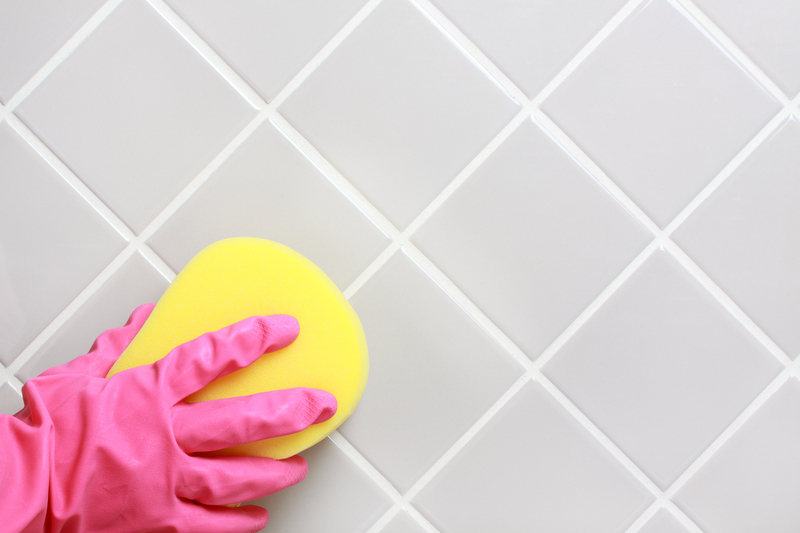Mold & Mildew on Wool Rugs
Posted on 27/09/2025
Mold & Mildew on Wool Rugs: Identification, Prevention, and Treatment
Wool rugs add a touch of luxury and warmth to any room. They are cherished for their durability, natural fibers, and exquisite designs. However, wool rugs, like any other organic material, are susceptible to mold and mildew if not properly maintained. They thrive in damp, dark environments and can cause significant damage to both the rugs and the health of the inhabitants. This comprehensive guide will help you understand how to identify, prevent, and treat mold and mildew on wool rugs.
Understanding Mold and Mildew
Before diving into prevention and treatment, it is essential to understand what mold and mildew are. Both are types of fungi, but they have distinct characteristics:
- Mold: Mold is a type of fungi that appears as black, green, or blue patches. It penetrates deep into organic materials and can cause health issues in humans, including respiratory problems and allergic reactions.
- Mildew: Mildew, a form of mold, typically appears as a white or gray powdery substance. It is usually easier to remove than mold but can still cause damage and health problems if not addressed promptly.

Signs of Mold and Mildew on Wool Rugs
Detecting mold and mildew early can help prevent extensive damage. Here are some common signs to look for:
- Musty Odor: One of the earliest signs of mold and mildew is a musty, unpleasant odor emanating from the rug.
- Discoloration: Mold and mildew often cause dark, discolored patches on the rug. This can include black, green, or white spots.
- Texture Changes: The affected areas may feel different from the rest of the rug. You might notice a rough or slimy texture.
- Allergic Reactions: If you or your family members experience unexplained allergic reactions or respiratory issues, it might be due to mold or mildew in your environment, including under or on the rug.
Causes of Mold and Mildew on Wool Rugs
Understanding the causes of mold and mildew can help in preventing their growth. Here are common factors contributing to their development:
- Humidity: High humidity levels provide the perfect environment for mold and mildew to thrive.
- Leaks: Leaking pipes or water seepage can lead to damp conditions, fostering the growth of fungi.
- Poor Ventilation: Rooms with inadequate ventilation trap moisture, creating a breeding ground for mold and mildew.
- Ineffective Cleaning: Infrequent or improper cleaning can leave behind moisture, encouraging fungal growth.
Prevention of Mold and Mildew
Preventing mold and mildew is far easier than dealing with them after they've taken hold. Here are several preventative measures:
- Control Humidity: Use dehumidifiers and air conditioners to maintain indoor humidity levels below 60%.
- Ensure Proper Ventilation: Ventilate rooms regularly to allow air to circulate and dry out any moisture.
- Fix Leaks Promptly: Address any plumbing leaks or water seepage issues immediately to prevent moisture accumulation.
- Regular Cleaning: Clean your wool rug regularly with dry methods. Occasionally, use a vacuum cleaner that has a HEPA filter to pick up any spores.
- Storage Practices: If you need to store your wool rug, ensure it is completely dry. Use a breathable storage bag and keep it in a cool, dry location.
Cleaning and Treatment Methods
If you discover mold or mildew on your wool rug, immediate action is essential to prevent further damage. Here is a step-by-step guide to cleaning and treating the affected areas:
1. Gather Materials
You will need:
- White vinegar or rubbing alcohol
- Soft bristle brush
- Protective gloves and mask
- Vacuum cleaner with HEPA filter
- Absorbent towels
2. Initial Vacuuming
Vacuum both sides of the rug thoroughly to remove loose spores and prevent them from spreading. Make sure to do this in a well-ventilated area or outside.
3. Apply Cleaning Solution
Mix equal parts of white vinegar and water or use undiluted rubbing alcohol. Using a spray bottle, apply the solution to the affected areas. The acidity of vinegar and the antiseptic properties of alcohol will kill the mold and mildew.
4. Scrub Gently
Using a soft bristle brush, gently scrub the affected areas. Be cautious to avoid damaging the wool fibers.
5. Blot Dry
Use absorbent towels to blot the area dry. Remove as much moisture as possible to prevent further fungal growth.
6. Dry Completely
Leave the rug to dry completely in a well-ventilated area. Avoid placing it in direct sunlight, which can cause the colors to fade.

When to Seek Professional Help
If the mold and mildew infestation on your wool rug is severe, or if your attempts to clean it are unsuccessful, seeking professional help is advisable. Professional cleaners have specialized equipment and expertise to handle extensive mold and mildew damage without further harming the rug.
- Specialized Cleaning Solutions: Professionals use commercial-grade cleaning solutions specifically designed for wool rugs.
- Advanced Techniques: They have access to techniques like hot water extraction and ozone treatment, which are highly effective in removing mold and mildew.
- Restoration Services: Some professionals offer restoration services to repair any damage caused by mold or mildew, helping to extend the life of your rug.
Conclusion
Wool rugs are a beautiful and valuable addition to any home, but they require proper care to maintain their appearance and longevity. Mold and mildew can cause significant damage if not addressed promptly. By understanding the causes and signs of these fungi, along with implementing effective preventative measures and cleaning techniques, you can keep your wool rug in pristine condition.
Regular maintenance, proper cleaning methods, and, when necessary, professional help are the keys to combating mold and mildew. Following these guidelines will ensure that your wool rug continues to beautify your home while providing a safe and healthy environment for your family.
In the end, a little effort goes a long way in protecting your wool rug from mold and mildew, helping you enjoy its warmth and elegance for many years to come.






